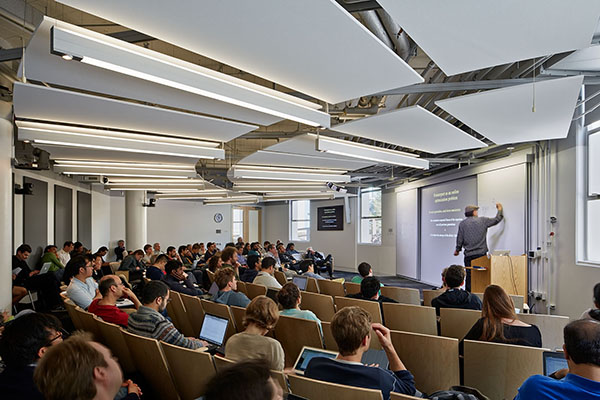Earlier this year, Berkeley kicked off a new program called The Brain and Computation. This semester-long series of 4 workshops aims to bring together researchers from brain science and theoretical computer science to tackle some of the most challenging problems in brain science today.
The program covers three main research themes:
- Open questions in Brain Science with computational components
- Brain Science research problems that computer scientists could take the lead in solving
- Computer science areas that neuroscience can help progress
At Numenta, we talk about theory everyday. In fact, part of what makes us so different from other experimental neuroscience laboratories is our focus on large-scale cortical theory. That’s why we were thrilled to see a program like this; it seems like a rarity to find a conference that recognizes the importance of theory, and we’re fortunate to have one in our backyard here in the Bay Area.
The workshop line-up of the program is as follows:
- The Brain and Computation Boot Camp (January)
- Representation, Coding and Computation in Neural Circuits (February)
- Targeted Discovery in Brain Data (March)
- Computational Theories of the Brain (April)
Recordings are available for the workshops that have already passed, and you can still sign up to attend the March and April workshops. Our co-founder, Jeff Hawkins, will be speaking at the final workshop in the series this April. If you are in the Bay Area, we encourage you to register.
Some of our research engineers attended the most recent workshop, Representation, Coding and Computation in Neural Circuits, and I asked one of them, Scott Purdy, to share his thoughts.
What were you hoping to get out of this event?
I wanted to learn more about the biology and modeling effort, as well as network with people that I’ll see at Cosyne and other venues.
What were you most looking forward to hearing?
The talks covering circuit-level mechanisms. Some talks cover fine-grained biology, some high-level abstractions, but the most interesting to me are the ones that show specific circuit level mechanisms, and several talks at this workshop fell into that category.
What was your key personal takeaway?
I learned a lot from the talks, but the discussions also reinforced how speculative a lot of the presumed functional roles of different brain regions are.
What were some of your favorite talks?
Murray Sherman, Martin Usrey, and Farran Briggs had back-to-back talks on the thalamus and the retina-thalamus-cortex circuits that hinted at some functional properties of the circuits.
Mark Sheffield showed that some place cell activity has a late onset, meaning that the cells don’t initially have place cell properties in a novel environment but after a few passes through the environment, they start to exhibit place cell properties. In discussions after his talk, I learned that the initial activity in the region is denser in a novel environment, indicating that there may be many candidate place cells for a novel location until some subset wins out. This fits very well with our theories for how neuron populations work, although this work focused on the hippocampus.
Josh Berke talked about the basal ganglia and implications for reinforcement learning. He showed some interesting impacts of dopamine on both motivation (latency to act) and learning.
All of these talks I found particularly relevant and useful for Numenta, given our current state of research.
If you would like to attend Jeff’s talk at the Computational Theories of the Brain workshop in April, register today. He will be presenting details of our theory documented in our peer-reviewed papers, as well as material that has not yet been published.

